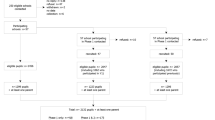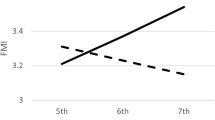Abstract
Objective:
To evaluate the single and joint associations of objectively measured moderate-to-vigorous physical activity (MVPA) and sedentary time on week and weekend days with obesity in children from 12 countries across all inhabited continents.
Methods:
A multinational, 12-country cross-sectional study of 5779 children aged 9–11 years was conducted. Time spent in MVPA and sedentary behaviors was assessed by waist-worn accelerometry. Logistic regression was used to examine the independent and joint associations of MVPA and sedentary time on weekdays and weekend with the odds of obesity.
Results:
After adjustment for all confounding factors, the odds ratios (ORs) of childhood obesity were the highest among children with a low level of MVPA on both weekdays and weekend (OR 4.67), high among children with a high level of MVPA on weekdays and a low level of MVPA on weekend (OR 1.99) and high among children with a low level of MVPA on weekdays and a high levels of MVPA on weekend (OR 2.20), compared to those with a high level of MVPA on both weekdays and weekend. Similarly, the ORs of childhood obesity were significantly higher among children with a high level of sedentary time on both weekdays and weekend (OR 1.87) compared with those with low levels of sedentary time on both weekdays and weekend.
Conclusions:
Lower levels of MVPA or higher levels of sedentary time on either weekdays or weekend were associated with increased odds of obesity in 9–11 year old children in 12 countries.
This is a preview of subscription content, access via your institution
Access options
Subscribe to this journal
Receive 12 print issues and online access
$259.00 per year
only $21.58 per issue
Buy this article
- Purchase on Springer Link
- Instant access to full article PDF
Prices may be subject to local taxes which are calculated during checkout
Similar content being viewed by others
References
World Health Organization. Global recommendations on physical activity for health. Geneva, Switzerland: World Health Organization; 2010.
Tremblay MS, Aubert S, Barnes JD, Saunders TJ, Carson V, Latimer-Cheung AE, et al. Sedentary Behavior Research Network (SBRN) - Terminology Consensus Project process and outcome. Int J Behav Nutr Phys Act. 2017;14:75.
World Health Organisation. Global health risks: Mortality and burden of disease attributable to selected major risks. Geneva: World Health Organisation; 2009.
Batty GD, Lee IM. Physical activity and coronary heart disease. BMJ. 2004;328:1089–90.
World Health Organization. Global recommendations on physical activity for health. Geneva: World Health Organization, 2010.
Katzmarzyk PT, Barreira TV, Broyles ST, Champagne CM, Chaput JP, Fogelholm M, et al. Physical activity, sedentary time, and obesity in an international sample of children. Med Sci Sports Exerc. 2015;47:2062–9.
Hubbard K, Economos CD, Bakun P, Boulos R, Chui K, Mueller MP, et al. Disparities in moderate-to-vigorous physical activity among girls and overweight and obese schoolchildren during school- and out-of-school time. Int J Behav Nutr Phys Act. 2016;13:39.
Evenson KR, Wen F, Metzger JS, Herring AH. Physical activity and sedentary behavior patterns using accelerometry from a national sample of United States adults. Int J Behav Nutr Phys Act. 2015;12:20.
Lee PH, Yu YY, McDowell I, Leung GM, Lam TH. A cluster analysis of patterns of objectively measured physical activity in Hong Kong. Public Health Nutr. 2013;16:1436–44.
Corder K, Craggs C, Jones AP, Ekelund U, Griffin SJ, van Sluijs EM. Predictors of change differ for moderate and vigorous intensity physical activity and for weekdays and weekends: a longitudinal analysis. Int J Behav Nutr Phys Act. 2013;10:69.
Fairclough SJ, Boddy LM, Mackintosh KA, Valencia-Peris A, Ramirez-Rico E. Weekday and weekend sedentary time and physical activity in differentially active children. J Sci Med Sport. 2015;18:444–9.
Prentice-Dunn H, Prentice-Dunn S. Physical activity, sedentary behavior, and childhood obesity: a review of cross-sectional studies. Psychol Health Med. 2012;17:255–73.
Franckle R, Adler R, Davison K. Accelerated weight gain among children during summer versus school year and related racial/ethnic disparities: a systematic review. Prev Chronic Dis. 2014;11:E101.
Moreno JP, Johnston CA, Woehler D. Changes in weight over the school year and summer vacation: results of a 5-year longitudinal study. J Sch Health. 2013;83:473–7.
von Hippel PT, Workman J. From kindergarten through second grade, U.S. children’s obesity prevalence grows only during summer vacations. Obes (Silver Spring). 2016;24:2296–300.
Katzmarzyk PT, Barreira TV, Broyles ST, Champagne CM, Chaput JP, Fogelholm M, et al. The International Study of Childhood Obesity, Lifestyle and the Environment (ISCOLE): design and methods. BMC Public Health. 2013;13:900.
LeBlanc AG, Katzmarzyk PT, Barreira TV, Broyles ST, Chaput JP, Church TS, et al. Are participant characteristics from ISCOLE study sites comparable to the rest of their country? Int J Obes Suppl. 2015;5(Suppl 2):S9–S16.
Barreira TV, Schuna JM Jr., Mire EF, Katzmarzyk PT, Chaput JP, Leduc, et al. Identifying children’s nocturnal sleep using 24-h waist accelerometry. Med Sci Sports Exerc. 2015;47:937–43.
Tudor-Locke C, Barreira TV, Schuna JM Jr., Mire EF, Chaput JP, et al. Improving wear time compliance with a 24-hour waist-worn accelerometer protocol in the International Study of Childhood Obesity, Lifestyle and the Environment (ISCOLE). Int J Behav Nutr Phys Act. 2015;12:11.
Tudor-Locke C, Barreira TV, Schuna JM Jr., Mire EF, Katzmarzyk PT. Fully automated waist-worn accelerometer algorithm for detecting children’s sleep-period time separate from 24-h physical activity or sedentary behaviors. Appl Physiol Nutr Metab. 2014;39:53–7.
Trost SG, Loprinzi PD, Moore R, Pfeiffer KA. Comparison of accelerometer cut points for predicting activity intensity in youth. Med Sci Sports Exerc. 2011;43:1360–8.
Janssen I, Leblanc AG. Systematic review of the health benefits of physical activity and fitness in school-aged children and youth. Int J Behav Nutr Phys Act. 2010;7:40.
Grontved A, Hu FB. Television viewing and risk of type 2 diabetes, cardiovascular disease, and all-cause mortality: a meta-analysis. JAMA. 2011;305:2448–55.
Thorp AA, Owen N, Neuhaus M, Dunstan DW. Sedentary behaviors and subsequent health outcomes in adults a systematic review of longitudinal studies, 1996-2011. Am J Prev Med. 2011;41:207–15.
Tremblay MS, LeBlanc AG, Kho ME, Saunders TJ, Larouche R, Colley RC, et al. Systematic review of sedentary behaviour and health indicators in school-aged children and youth. Int J Behav Nutr Phys Act. 2011;8:98.
Pearson N, Braithwaite RE, Biddle SJ, van Sluijs EM, Atkin AJ. Associations between sedentary behaviour and physical activity in children and adolescents: a meta-analysis. Obes Rev. 2014;15:666–75.
de Onis M, Onyango AW, Borghi E, Siyam A, Nishida C, Siekmann J. Development of a WHO growth reference for school-aged children and adolescents. Bull World Health Organ. 2007;85:660–7.
Qiao Y, Ma J, Wang Y, Li W, Katzmarzyk PT, Chaput JP, et al. Birth weight and childhood obesity: a 12-country study. Int J Obes Suppl. 2015;5(Suppl 2):S74–9.
Currie C, Nic Gabhainn S, Godeau E. The Health Behaviour in School-aged Children: WHO Collaborative Cross-National (HBSC) study: origins, concept, history and development 1982-2008. Int J Public Health. 2009;54(Suppl 2):131–9.
Mikkila V, Vepsalainen H, Saloheimo T, Gonzalez SA, Meisel JD, Hu G, et al. An international comparison of dietary patterns in 9-11-year-old children. Int J Obes Suppl. 2015;5(Suppl 2):S17–21.
Wong SH, Huang WY, He G. Longitudinal changes in objectively measured physical activity differ for weekdays and weekends among Chinese children in Hong Kong. BMC Public Health. 2015;15:1310.
Yen CF, Hsiao RC, Ko CH, Yen JY, Huang CF, Liu SC, et al. The relationships between body mass index and television viewing, internet use and cellular phone use: the moderating effects of socio-demographic characteristics and exercise. Int J Eat Disord. 2010;43:565–71.
Anderson SE, Economos CD, Must A. Active play and screen time in US children aged 4 to 11 years in relation to sociodemographic and weight status characteristics: a nationally representative cross-sectional analysis. BMC Public Health. 2008;8:366.
Moore JB, Beets MW, Morris SF, Kolbe MB. Day of the week is associated with meeting physical activity recommendations and engaging in excessive sedentary time in youth. J Phys Act Health. 2014;11:971–6.
Drenowatz C, Gribben N, Wirth MD, Hand GA, Shook RP, Burgess S, et al. The association of physical activity during weekdays and weekend with body composition in young adults. J Obes. 2016;2016:8236439.
Brazendale K, Beets MW, Weaver RG, Pate RR, Turner-McGrievy GM, Kaczynski AT, et al. Understanding differences between summer vs. school obesogenic behaviors of children: the structured days hypothesis. Int J Behav Nutr Phys Act. 2017;14:100.
Funding
The International Study of Childhood Obesity, Lifestyle and the Environment (ISCOLE) was funded by The Coca-Cola Company. Dr. Hu was partly supported by a grant from the National Institute of Diabetes and Digestive and Kidney Diseases (R01DK100790) and the National Institute of General Medical Sciences (U54GM104940) of the National Institutes of Health. With the exception of requiring that the study be global in nature, the funder had no role in the design and conduct of the study; collection, management, analysis and interpretation of the data; and preparation, review or approval of the manuscript.
Author information
Authors and Affiliations
Consortia
Corresponding author
Ethics declarations
Conflict of interest
The authors declare that they have no conflict of interest.
Additional information
Publisher’s note: Springer Nature remains neutral with regard to jurisdictional claims in published maps and institutional affiliations.
Rights and permissions
About this article
Cite this article
Li, N., Zhao, P., Diao, C. et al. Joint associations between weekday and weekend physical activity or sedentary time and childhood obesity. Int J Obes 43, 691–700 (2019). https://doi.org/10.1038/s41366-019-0329-9
Received:
Revised:
Accepted:
Published:
Issue Date:
DOI: https://doi.org/10.1038/s41366-019-0329-9
This article is cited by
-
The Temporal Relationships Between 24-h Movement Behaviors Among Children with Autism Spectrum Disorder
Advances in Neurodevelopmental Disorders (2022)
-
Children’s moderate-to-vigorous physical activity on weekdays versus weekend days: a multi-country analysis
International Journal of Behavioral Nutrition and Physical Activity (2021)
-
Prevalence and correlates of adherence to the combined movement guidelines among Czech children and adolescents
BMC Public Health (2020)



